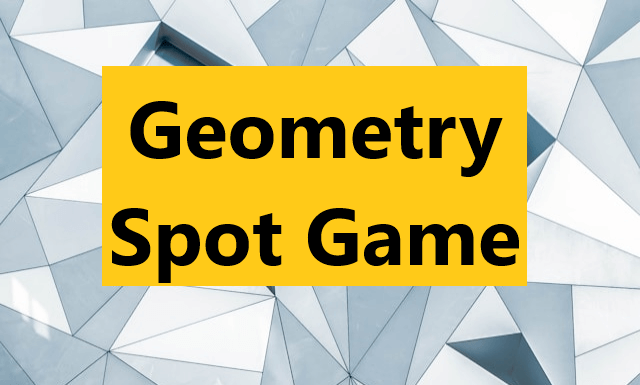Introduction:
Geometry, the study of shapes, sizes, and properties of figures, has fascinated mathematicians and scholars for centuries. Within this vast field lies a lesser-known yet intriguing concept: Geometry Spots. These enigmatic spots offer a unique perspective on geometry, unveiling hidden patterns and relationships that often escape the naked eye. In this article, we embark on a journey to unlock the secrets of Geometry Spots, delving into their significance, applications, and the mysteries they unravel.
Understanding Geometry Spots:
Geometry Spots, also known as geometric centroids, are pivotal points within geometric figures that possess remarkable properties. They serve as the center of mass or balance for a shape, representing a point where the figure could be perfectly balanced if placed on a needle or pin. This inherent equilibrium makes Geometry Spots fundamental in various fields, including architecture, engineering, physics, and even art.
Exploring their Significance:
The significance of Geometry Spots extends far beyond their role in maintaining balance. These points often reveal profound insights into the structure and symmetry of geometric shapes. For instance, in a triangle, the Geometry Spot, known as the centroid, lies at the intersection of its medians, dividing each median into segments with a 2:1 ratio. This property demonstrates the centroid’s importance as a center of gravity and its influence on the distribution of mass within the triangle.
Applications in Different Fields:
Geometry Spots find diverse applications across numerous disciplines. In architecture and engineering, they aid in designing structurally sound buildings and bridges by determining optimal load distribution and stability. In physics, they facilitate the analysis of moments of inertia and rotational dynamics, guiding the design of mechanical systems and machinery. Moreover, artists and designers leverage Geometry Spots to create aesthetically pleasing compositions and balance visual elements in their works.
Unraveling Mysteries through Geometry Spots:
The study of Geometry Spots often leads to the discovery of intriguing mathematical phenomena and relationships. For example, the Fermat point, a Geometry Spot within a triangle, represents a point where the sum of the distances to the vertices is minimized, giving rise to captivating geometric configurations. Additionally, the Euler line, which passes through several Geometry Spots in a triangle, unveils a deep connection between seemingly disparate elements of triangle geometry.
Challenges and Future Directions:
Despite their significance, exploring Geometry Spots poses challenges, particularly in higher-dimensional spaces and complex geometric figures. However, advancements in computational geometry and mathematical modeling continue to expand our understanding of these elusive points. Future research may focus on extending the concept of Geometry Spots to non-Euclidean geometries and exploring their applications in emerging fields such as computer graphics, robotics, and materials science.
Conclusion:
Geometry Spots stand as silent witnesses to the elegance and complexity of geometric shapes, offering invaluable insights into their structure, balance, and symmetry. By unraveling the secrets of Geometry Spots, mathematicians, scientists, and designers continue to push the boundaries of knowledge, uncovering new connections and applications that enrich our understanding of the world around us. As we delve deeper into the enigmatic realm of Geometry Spots, we embark on a journey of discovery that transcends the confines of space and time, unlocking the mysteries of geometry with each revelation.
Frequently Asked Questions about Geometry Spots
1. What is a Geometry Spot?
A Geometry Spot, also known as a geometric centroid, is a point within a geometric figure that represents its center of mass or balance. It is the point where the figure could be perfectly balanced if placed on a needle or pin.
Also Read: Getting to Know Rashmika Mandanna: The Rising Star of Indian Cinema
2. What is the significance of Geometry Spots?
Geometry Spots play a crucial role in various fields such as architecture, engineering, physics, and art. They provide insights into the structure, symmetry, and balance of geometric shapes, guiding the design of buildings, bridges, mechanical systems, and artistic compositions.
3. How are Geometry Spots determined?
The method for determining Geometry Spots varies depending on the shape of the figure. For simple shapes like triangles, the Geometry Spot can be calculated using geometric properties such as medians, centroids, or circumcenters. In more complex figures, computational techniques or mathematical modeling may be employed.
4. What are some examples of Geometry Spots?
Common examples of Geometry Spots include the centroid of a triangle, which lies at the intersection of its medians; the circumcenter, which is equidistant from the triangle’s vertices; and the center of mass of a circle, located at its geometric center.
5. How are Geometry Spots used in real-world applications?
Geometry Spots are utilized in various real-world applications, such as determining load distribution and stability in architectural and engineering designs, analyzing moments of inertia and rotational dynamics in physics, and creating balanced visual compositions in art and design.
6. Are there any challenges associated with Geometry Spots?
One challenge is applying the concept of Geometry Spots to higher-dimensional spaces or complex geometric figures, which may require advanced mathematical techniques and computational tools. Additionally, accurately determining Geometry Spots in irregular shapes or non-Euclidean geometries can be complex.
7. What is the significance of studying Geometry Spots?
Studying Geometry Spots not only deepens our understanding of geometric shapes but also reveals fundamental principles of balance, symmetry, and spatial relationships. It fosters innovation and creativity across diverse fields, driving advancements in science, technology, and design.
8. Are there any future directions for research on Geometry Spots?
Future research on Geometry Spots may explore their applications in emerging fields such as computer graphics, robotics, and materials science. Additionally, investigating Geometry Spots in non-Euclidean geometries and higher-dimensional spaces could lead to new insights and discoveries.

